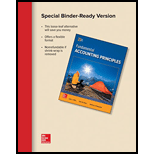
Introduction:
General Purpose Financial Statements:
• Financial statements are financial records of the entities transactions for a given reporting period and indicate the financial health of an entity. They comprise of:
- Income Statements and Notes to Income Statement,
- Statement of
Retained Earnings
- Statement of Shareholders’ Equity.
- Balance Sheets and,
Cash flow statements.
• Income Statements and Notes to Income Statement record the results of the company’s operations during a particular reporting period and provide information about the sources of funds and expenses of an entity.
• The sources of incomes are revenues from sales of goods and services and expenses are in the form of direct and indirect cost of operations. Surplus or deficit of the incomes over expenses is carried forward to the
• Journal entries are the first step in recording financial transactions and preparation of financial statements.
• These represent the impact of the financial transaction and demonstrate the effect on the accounts impacted in the form of debits and credits.
• Assets and expenses have debit balances and Liabilities and Incomes have credit balances and according to the business transaction, the accounts are appropriately debited will be credited by credited to reflect the effect of business transactions and events.
To Prepare:
Impact of Adjustments on Net Income
Want to see the full answer?
Check out a sample textbook solution
Chapter 3 Solutions
Loose Leaf for Fundamental Accounting Principles
- Bruno Manufacturing uses direct labor-hours in its predetermined overhead rate. At the beginning of the year, the total estimated manufacturing overhead was $680,000. At the end of the year, actual direct labor-hours for the year were 42,500 hours, manufacturing overhead for the year was underapplied by $25,500, and the actual manufacturing overhead was $695,000. The predetermined overhead rate for the year must have been closest to: A) $16.00 B) $15.75 C) $16.35 D) $16.94arrow_forwardWhat was manufactured overhead?arrow_forwardWhich of the following choices is the correct status of manufacturing overhead at year-end?arrow_forward
- Morris Corporation applies manufacturing overhead at the rate of $40 per machine hour. Budgeted machine hours for the current period were anticipated to be 200,000; however, higher than expected production resulted in actual machine hours worked of 225,000. Budgeted and actual manufacturing overhead figures for the year were $8,000,000 and $8,750,000, respectively. On the basis of this information, the company's year-end overhead was: A. overapplied by $250,000 B. underapplied by $250,000 C. overapplied by $750,000 D. underapplied by $750,000arrow_forwardAt the beginning of the year, manufacturing overhead for the year was estimated to be $560,000. At the end of the year, actual labor hours for the year were 35,000 hours, the actual manufacturing overhead for the year was $590,000, and the manufacturing overhead for the year was underapplied by $30,000. If the predetermined overhead rate is based on direct labor hours, then the estimated labor hours at the beginning of the year used in the predetermined overhead rate must have been ___ hours.arrow_forwardGive me Answerarrow_forward

 AccountingAccountingISBN:9781337272094Author:WARREN, Carl S., Reeve, James M., Duchac, Jonathan E.Publisher:Cengage Learning,
AccountingAccountingISBN:9781337272094Author:WARREN, Carl S., Reeve, James M., Duchac, Jonathan E.Publisher:Cengage Learning, Accounting Information SystemsAccountingISBN:9781337619202Author:Hall, James A.Publisher:Cengage Learning,
Accounting Information SystemsAccountingISBN:9781337619202Author:Hall, James A.Publisher:Cengage Learning, Horngren's Cost Accounting: A Managerial Emphasis...AccountingISBN:9780134475585Author:Srikant M. Datar, Madhav V. RajanPublisher:PEARSON
Horngren's Cost Accounting: A Managerial Emphasis...AccountingISBN:9780134475585Author:Srikant M. Datar, Madhav V. RajanPublisher:PEARSON Intermediate AccountingAccountingISBN:9781259722660Author:J. David Spiceland, Mark W. Nelson, Wayne M ThomasPublisher:McGraw-Hill Education
Intermediate AccountingAccountingISBN:9781259722660Author:J. David Spiceland, Mark W. Nelson, Wayne M ThomasPublisher:McGraw-Hill Education Financial and Managerial AccountingAccountingISBN:9781259726705Author:John J Wild, Ken W. Shaw, Barbara Chiappetta Fundamental Accounting PrinciplesPublisher:McGraw-Hill Education
Financial and Managerial AccountingAccountingISBN:9781259726705Author:John J Wild, Ken W. Shaw, Barbara Chiappetta Fundamental Accounting PrinciplesPublisher:McGraw-Hill Education





